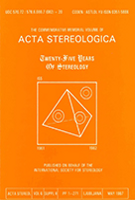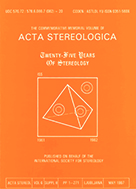- Accueil
- Volume 17 (1998)
- Number 3 - Dec. 1998
- A planar model of hepatic blood flow potential
Visualisation(s): 276 (1 ULiège)
Téléchargement(s): 30 (0 ULiège)
A planar model of hepatic blood flow potential

Abstract
We present a two-dimensional model of hepatic blood flow potential that takes afferent and efferent venous vessels and the sinusoidal capillary network into account. Congruent equilateral triangles were chosen as units. Planar patterns of such triangles can be interpreted in terms of the classical hexagonal liver lobule, a complementary bile lobule, and of Rappaport’s acinus. Model assumptions include a fixed terminal portal and hepatic venous reassure and a fixed distribution of flow conductivity inside the planar unit. Simulated pressure potentials differed substantially for the physiologic condition and for liver congestion. The model corresponds to the planar distribution of glucose-6-phosphatase activity and demonstrates an intimate relationship between hepatic microcirculation and metabolic heterogeneity. Furthermore, in simulations of liver congestion, predicted alterations of intralobular pressure reflected changes of liver morphology, thus suggesting a causal association between both processes.
Pour citer cet article
A propos de : Hansjörg Scherberger
Anatomisches Institut II der Universität Freiburg, Albertstr. 17, D-79104 Freiburg, Germany; Dept. of Neurology, Vestibular Lab., Zürich University Hospitals, CH-8091 Zürich, Switzerland
A propos de : Ortwin Leder
Anatomisches Institut II der Universität Freiburg, Albertstr. 17, D-79104 Freiburg, Germany





